Laser Diodes
, Posted by ADMIN at 3:33 AM
White light is made up of all the colours of the visible light spectrum, which is a very wide band of many different frequencies. Ordinary LEDs give a light output often consisting of one colour, but even that light contains electromagnetic waves covering quite a wide band of frequencies.
Any light that contains multiple frequencies is difficult to focus to a very fine point of light. This is because the lens system focussing the light has a particular focal length, but the focal length is different for each wavelength of light. Therefore light of different wavelengths focus at different points, causing what is called "chromatic aberration". This can be seen, even in good quality lens systems as coloured "fringing" around images seen through the lens.
The light from a laser contains only a single frequency and therefore can be focussed by even a simple lens system to an extremely small point. There is no chromatic aberration since only one wavelength exists, also all of the energy from light source is concentrated into a very small spot of light. Typically the diameter of the focussed light beam from a laser such as that found in a CD player would be about 1.6µm (less than two thousandths of a millimetre). This means that if the laser diode output was only 0.5mW the focussed (infra red) power of the beam (allowing for losses in the focussing lens) would be about 12kW/cm2.
Low power Lasers are used in an increasing number of familiar applications including CD and DVD players and recorders, bar code readers, security systems, optical communications and surgical instruments. LASER is an acronym (a bunch of initials made into a word) for;
Light Amplification by the Stimulated Emission of Radiation
The name gives a description of how the device works, so long as a few basic principles are understood.
The Basics of an Atom
Everything in the universe is made up from only about 100 different atoms, either in a pure form (an element) or in an unlimited number of combinations (compounds and mixtures). Atoms are constantly in motion. They continuously vibrate, move and rotate. Even solid materials are actually in motion. This motion is called excitation. Atoms can be in different states of excitation. In other words, they can have different energies. If a lot of energy is applied to an atom via heat, light, or electricity, it can leave what is called the ground-state energy level and go to an excited level. The level of excitation depends on the amount of energy that is applied to the atom.
Figure 1 is a simplified diagram of what the atom looks like. It consists of a nucleus (containing the protons and neutrons) and an electron cloud. It´s helpful to think of the electrons in this cloud circling the nucleus in many different orbits. Although more modern views of the atom do not depict discrete orbits for the electrons, it can be useful to think of these orbits as the different energy levels of the atom. In other words, if some heat is applied to an atom, some of the electrons in the lower energy orbits would jump to higher energy orbits further away from the nucleus. This is a highly simplified view of things, but contains the basic idea of how atoms work in terms of lasers.
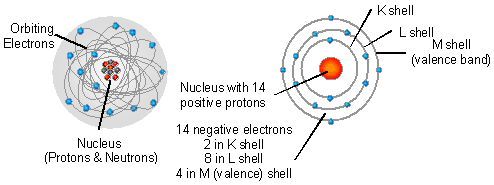
Figure 1. An Atom Consists of a Nucleus and Orbiting Electrons
As an atom absorbs energy in the form of heat, light or electricity, electrons may move from a lower energy orbit to a higher energy orbit. Once an electron has moved to a higher-energy orbit, it eventually wants to return to the ground state. When it does, it releases its energy as a photon − a particle of light. Atoms can be seen releasing energy as photons all the time. For example, when metal glows "red hot", the red light seen is the atoms of the hot metal releasing red photons. When looking at a picture on a TV screen, what you are seeing is phosphor atoms that coat the screen, being excited by high−speed electrons, emitting different colours of light. Anything that produces light − fluorescent lights, incandescent bulbs − all emit light through the action of electrons changing orbits and releasing photons.
Laser Action
Although there are many types of lasers in use, they all have certain essential features. In a laser, the lasing medium is "pumped" to get the atoms into an excited state. Typically, very intense flashes of light or electrical currents pump the lasing medium and create a large collection of excited-state atoms (atoms with electrons having higher than normal energy levels). A large collection of atoms, all in the excited state is needed for a laser to work efficiently. In general, the atoms are excited to a level that is two or three levels above the ground state. This increases the degree of population inversion. This is the number of atoms in the excited state versus the ground state.
Once the lasing medium is pumped, it contains a collection of atoms with some electrons sitting in excited levels. The excited electrons have energies greater than the more relaxed electrons. Just as the electron absorbed energy to reach this excited level, it can also release this energy.

Figure 2. The Absorbtion of Energy
As Figure 2 illustrates, the electron can drop back to a lower energy level, and in doing so, release the extra energy. This energy is released in the form of photons (particles or "packets" of light energy). The photon emitted has a very specific wavelength, (which also means it will have a very specific colour). This depends on the state of the electron´s energy when the photon is released. Two identical atoms with electrons in identical states will release photons with identical wavelengths.
Laser light is very different from normal light, and has the following properties:
- • The light released contains only one specific wavelength (one specific colour of light). The wavelength (typically 780 nano-metres) is determined by the amount of energy released when the electron drops to a lower orbit.
- • The light released is coherent. The light is all of the same wavelength and all the photons move in phase with each other. This means that all of the photons have wave fronts that move in unison.
- • The light is very directional. A laser light has a very tight beam and is very strong and concentrated, unlike a flashlight or torch for example, which releases light that is very weak and diffuse and spreads in many directions.
When the three properties above occur, it is called stimulated emission. This does not occur normally in ordinary light, all of the atoms release their photons randomly. In stimulated emission, photon emission is organized.
If a photon (possessing a certain energy and phase) encounters another atom that has an electron in the same excited state, stimulated emission can occur. The first photon can stimulate another photon emission, such that the newly emitted photon (from the second atom) vibrates with the same frequency phase and direction as the incoming photon. Figure 3 illustrates what happens in a three−level laser, this is the action used in a real laser.
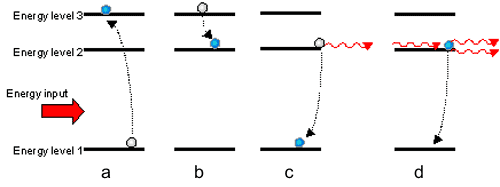
Figure 3. The three level laser
a. Light or electrical energy enters the system and pumps electrons to a higher energy level.
b. Pumping is unstable so electron quickly jumps to a slightly lower energy level.
c. When electron loses energy and relaxes back to original level a photon is emitted.
d. When this photon encounters another electron in an exited state, it stimulates this electron into also emitting a photon. This second photon will have the same wavelength and phase as the first photon, these two photons combine so that light is doubled.
The other essential part of a laser is a pair of mirrors, one at each end of the lasing medium. Photons, with a very specific wavelength and phase, reflect off the mirrors to travel back and forth through the lasing medium. As they do so, they stimulate other electrons to make the downward energy jump, and so cause the emission of even more photons of the same wavelength and phase. A cascade effect occurs, and soon there are many, many photons of the same wavelength and phase. This is the "Light Amplification" part of the laser's name.
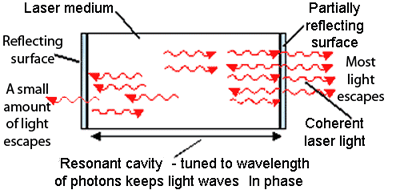
Figure 4. The resonant cavity effect in a laser
As the photons increase in number, the light increases in power. Although some light escapes in different directions, some of the photons run in a direction parallel to the laser's axis, these bounce back and forth off the ends of the laser material. The end surfaces are accurately cut and polished to create reflecting mirrors. The distance between these reflecting surfaces is an exact multiple of one complete wave, so that as the light waves (the photons) reflect from each end of the cavity, they stay "in phase", and the amplitude of the reflected wave adds to the amplitude of other waves within the cavity, so the waves keep adding as they bounce back and forth between the mirrors. The material forms in effect a "Resonant Cavity" that aids the amplification of the light. As the photons pass through the crystal laser material, they also stimulate emission in other atoms. As a result, monochromatic, single−phase light leaves the resonant cavity of the laser through the semi-reflecting mirror. This light will then pass through a collimating lens, which is a lens that focusses the laser light into a parallel beam rather than a spreading one. This is made possible because the laser light waves are all of the same wavelength. Laser light therefore, is not like a normal light beam that contains light of many wavelengths. The effect of the collimating lens is to correctly focus only a single wavelength of light within the whole beam, with single wavelength laser light, that is exactly what happens!
The Laser Diode.
A laser diode is basically a LED producing laser light. To do this the LED is operated at a much higher current (typically 100mA) than a normal LED (about 10mA). Figure 5 (below) compares a graph of the light output of a normal LED and that of a laser diode. In a LED the light output increases steadily as the diode current is increased. Beyond a certain current however stimulated emission starts to occur. The threshold current is normally more than 80% of the total current the device will pass before being destroyed! For this reason the current through the laser diode must be carefully regulated. Another problem is that the emission of photons is very dependant on temperature; the diode is already being operated close to its limit and so gets hot, so changing the amount of light emitted (photons) and the diode current. So, by the time the laser diode is working efficiently it is operating on the brink of disaster! If the current reduces it falls below the threshold current, and stimulated emission ceases; just a little too much current and the diode is destroyed.
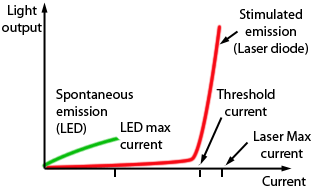
Figure 5. Comparison between LED and Laser diode.
For these reasons, laser diodes are rarely used on their own; they are normally supplied as a laser diode module, which contains:
• The diode itself.
• A simple lens to produce a collimated (parallel) beam of light.
• Photodiode light sensor.
• A current regulation circuit.
The laser diode module is a self-regulating circuit that senses its own light output and automatically regulates the supply current and temperature to keep the diode operating in the critical conditions where laser light is produced.
Laser diode modules are available complete with optics and electronics. A typical module would feature facilities such as built-in power stabilisation, built-in slow start and heatsink. Low power modules (Class II) are used in laser pointers, bar-code readers, sighting, levelling and positioning equipment, as well as a wide range of educational and laboratory uses. They produce a continuous wave, rather than a pulsed wave output, at various wavelengths between 500nm and 900nm, and so have different colours of laser light (green at 532nm and red at 650nm) as well as infra−red and near infra−red. They are simple to use, requiring typically a 3V to 5V DC supply to operate. Maximum input current should be restricted to around 70mA.
Laser Classifications
Lasers are classified into four broad areas (plus sub areas) depending on the potential for causing biological damage. When you see a laser, it should be labelled with appropriate class designation, briefly described below:
- • Class 1 − Safe under conditions of normal use. Output is restricted to less than 0.39mW at 600nm (less for shorter wavelengths).
- • Class 1M − Lasers producing divergent beams safe for all conditions of use, except when passed through magnifying optics such as microscopes and telescopes.
- • Class 2 − Low power visible lasers that emit above Class 1 levels but at a radiant power not above 1 mW. The concept is that the human aversion reaction to bright light (the blink reflex) will protect a person. This class is used for laser pointers.
- • Class 2M − Similar to Class 2 but can allow more power as beams with this classification must produce wide or diverging beams. Light passing through the pupil of a viewer must not be greater than that allowed in class 2.
- • Class 3R − Moderate power lasers below 5mW, considered safe where viewing is restricted, giving low risk of injury.
- • Class 3B − High-power lasers up to 500 mW, pulsed lasers: Hazardous to view (except as reflected light from a matt surface) significant controls such as protective eyewear and safety interlocks are required of Class 3B laser facilities.
- • Class 4 − High power lasers greater than 500mW. They can burn the skin, and cause potentially devastating and permanent eye damage as a result of direct or diffuse beam viewing. They may also ignite combustible materials, and thus may represent a fire risk. This classification includes many industrial, scientific, medical and military lasers.
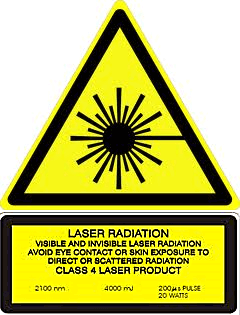
Figure 6. Typical Laser Warning Stickers
Equipment using lasers of any of the above classifications will be found to carry a warning label outling the hazards and the classification of the laser used.
The above list is an abridged version of the laser specifications contained in the IEC 60825−1 standard and should not be relied on as a comprehensive guide. The full standard, together with other relevant safety information can be purchased from the International Electrotechnical Commission Webstore
More information on Laser Diodes, including data sheets − visit BOB Laser Co. Ltd









Currently have 0 comments: